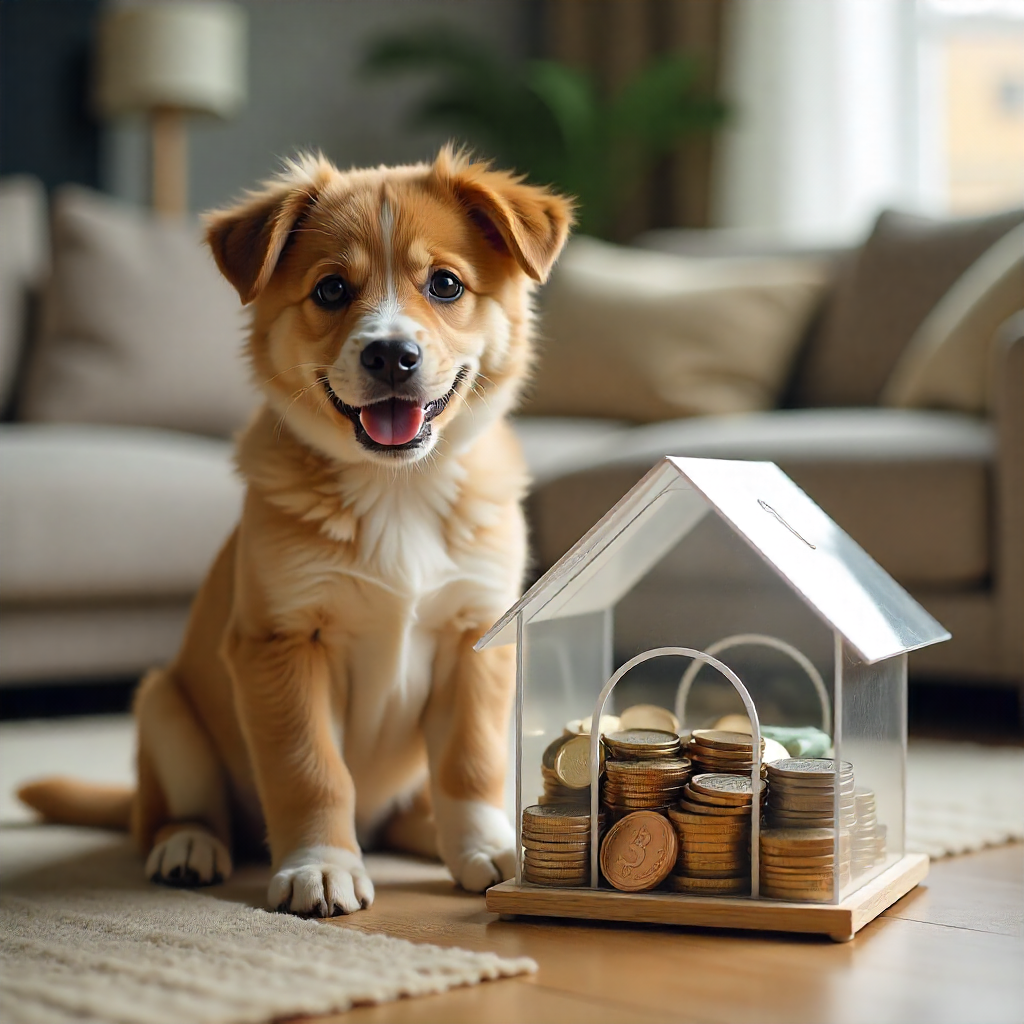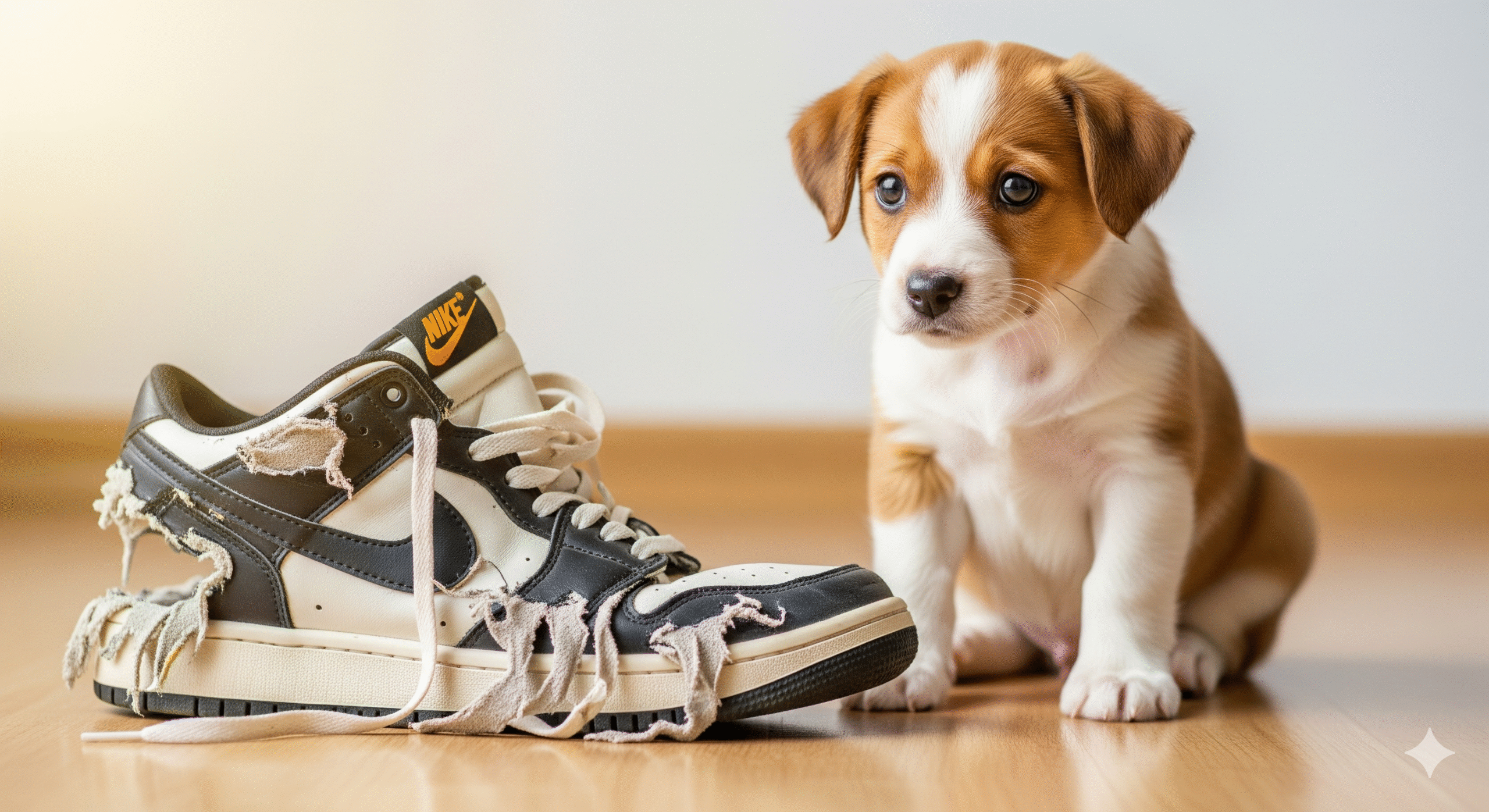Bringing home a new puppy is an explosion of joy, fluffy cuddles, and… unexpected receipts. 🧾 While most soon-to-be pet parents budget for the obvious things like food, a crate, and vet check-ups, the true cost of puppy ownership often lies in the dozens of smaller, overlooked items and situations that quickly add up.
These hidden puppy costs can create financial stress and catch even the most prepared families off guard. But forewarned is forearmed! This comprehensive guide will shine a light on the 12 most common unexpected expenses, from mandatory preventatives to “puppy-proofing” your life. Our goal isn’t to scare you, but to empower you with the knowledge to create a truly realistic budget, ensuring your focus remains on the joy of your new family member, not the shock of your credit card bill.
Why “Puppy-Proofing” Your Wallet is as Important as Your Home
The initial purchase or adoption fee is just the tip of the financial iceberg. A study by the American Kennel Club suggests that the first year of owning a dog can often cost between $1,500 and $5,000 or more, with a significant portion of that coming from unforeseen expenses.
Puppies, like human babies, have developing immune systems, boundless curiosity, and specific developmental needs that adult dogs do not. This unique life stage requires investment in preventative care, training, and replacing the things they inevitably destroy. Understanding these hidden puppy costs is the first step toward responsible ownership and avoiding difficult financial decisions down the line.
The 12 Hidden Puppy Costs You Need to Know
Let’s break down these unexpected expenses into categories to help you build a comprehensive and realistic puppy budget.
1. Preventative Medications: Non-Negotiable Health Essentials 💊
This is one of the biggest budget blindspots. Beyond initial vaccinations, ongoing prevention is crucial.
- Flea, Tick, and Heartworm Preventatives: These are monthly expenses for most of the country. A year’s supply can easily cost $200-$400, depending on your dog’s size and the brand your vet recommends. Skipping these to save money can lead to devastatingly expensive treatments later.
- Pro Tip: Many online pharmacies are legitimate and can offer savings, but always check with your vet first to ensure you’re getting the correct product and dosage.
2. The “Oops, I Ate It” Emergency Fund 🚑
Puppies explore the world with their mouths. This leads to emergency vet visits for ingested foreign objects.
- Common Offenders: Socks, underwear, rocks, pacifiers, and chew toy fragments.
- The Cost: An emergency visit, including X-rays to locate the object, can start at $500-$1,000. If surgery is required for obstruction, costs can skyrocket to $2,000-$8,000+.
- Actionable Tip: Start a dedicated savings account for your pet and contribute a small amount each month. Consider pet insurance early, before any conditions arise.
3. Professional Training & Socialization Classes 🎓
While you can train at home, professional guidance is invaluable for first-time owners or strong-willed breeds.
- Group Puppy Classes: Essential for socialization and basic obedience, typically costing $100-$200 for a 6-week course.
- Private Training: For specific behavioral issues like severe anxiety or aggression, sessions can range from $50-$150 per hour.
- This is an investment in a well-behaved adult dog and can prevent costly behavior-related issues later (like destroyed furniture or liability incidents).
4. Puppy-Proofing Your Home & Yard 🛡️
Your home is a hazard-filled playground for a puppy. Securing it requires more than just putting away shoes.
- Physical Barriers: Baby gates ($30-$80 each), playpens ($50-$150), and crate ($40-$200).
- Cable Management: Cord protectors and concealers to prevent electrocution ($20-$50).
- Yard Security: Fortifying fencing, filling holes, and securing gates can cost $100+ in materials, even for a DIY job.
5. The “Trial & Error” Tax: Food, Toys, and Gear 🔄
Puppies have preferences and sensitivities. You likely won’t get it right on the first try.
- Food: You may need to try 2-3 different brands or formulas (e.g., kibble, sensitive stomach, chicken-free) before finding one that works, costing an extra $50-$100.
- Toys & Beds: You’ll buy toys they ignore and destroy the ones you hoped would last. You’ll go through cheaper beds before investing in a durable, adult-sized one. Budget for this experimentation phase.
6. Grooming: Beyond the Basic Brush ✂️
Even short-haired puppies need maintenance that owners often underestimate.
- Professional Grooming: Breeds like Poodles, Shih Tzus, or Goldendoodles require professional grooming every 4-6 weeks, costing $50-$100+ per session.
- Home Grooming Supplies: A quality brush, nail clippers, dog-specific shampoo, ear cleaner, and toothpaste/toothbrush can be a $75-$150 initial investment.
7. Pet Sitting & Dog Walking Services 🚪
Your spontaneous weekend getaways are over. Your puppy can’t be left alone for long periods.
- Dog Walker: If you work long hours, a mid-day walker can cost $15-$25 per walk.
- Pet Sitter/Boarding: Going on vacation? Boarding facilities cost $30-$60 per night, while a house sitter may be $50-$100 per day.
8. Licensing & Microchipping 📍
These are often mandatory and one-time or annual costs that are easily forgotten.
- Dog License: Required in most cities, typically $10-$25 per year.
- Microchipping: A one-time cost of $40-$60, plus a potential small annual fee to register your contact info with the database.
9. Dental Care: A Long-Term Investment 😁
Dental health is directly linked to overall health, and it starts in puppyhood.
- Start-Up Kit: Toothbrush, toothpaste (never human toothpaste!), and dental chews. (~$30)
- Professional Cleaning: While not an immediate puppy cost, adult dogs often need cleanings under anesthesia, which can cost $500-$1,500. Starting dental care early can delay this major expense.
10. Replacement Costs: The Price of Destruction 🧸
Puppies chew. It’s a fact of life. Budget for the replacement of personal items.
- Common Casualties: Shoes, eyeglasses, area rugs, furniture legs, phone chargers, and books.
- Mindset Shift: View these not as malicious acts, but as a predictable cost of owning a puppy. It’s not a matter of if, but what and how much it will cost.
11. Higher Utility Bills 💡
A small but tangible cost. With a puppy at home, you might be:
- Running the air conditioning or heat more because you can’t leave windows open.
- Doing multiple loads of laundry per week washing soiled bedding and blankets.
- Expect a potential $10-$30 increase in your monthly bills.
12. Time is Money: The Opportunity Cost ⏰
This is the most abstract but very real hidden puppy cost. The time you spend on:
- Housetraining (multiple trips outside per day)
- Training sessions
- Socialization outings
- Cleaning up accidents
- Is time you are not spending on side hustles, overtime, or other income-generating activities.
How to Build a Realistic Puppy Budget: Your Action Plan
Now that you’re aware of these hidden puppy costs, it’s time to plan.
- Research Breed-Specific Needs: Some breeds have higher grooming, training, or medical predispositions.
- Get Pet Insurance Quotes: Look into plans early. It can mitigate massive emergency vet bills.
- Create a Sinking Fund: Before you even get the puppy, start setting aside money each month into a dedicated “pet fund.”
- Price Everything Out: Call local vets for vaccine and preventative medication prices. Price out grooming services and training classes in your area.
- Budget for the “Trial & Error” Tax: Add a 15-20% buffer to your initial supplies budget for things you’ll need to replace or re-buy.
Conclusion: An Informed Owner is a Prepared Owner
Understanding these hidden puppy costs allows you to transition into pet ownership with confidence, not financial fear. The love and companionship of a dog are priceless, but responsible ownership requires a practical and clear-eyed view of the expenses involved. By budgeting for both the expected and the unexpected, you ensure that you can provide the best possible care for your new best friend throughout their entire life.

💡 Call to Action (CTA): Did we miss any surprising costs? Share your own story of an unexpected puppy expense in the comments below to help fellow pet parents prepare! For more essential guides on responsible dog ownership, subscribe to our newsletter for expert tips delivered straight to your inbox.
Ready for a Fun Weekend Project? If your puppy thrives on learning and activity, building a simple agility course can be a incredibly rewarding experience for both of you. It’s easier and cheaper than you think! For instructions and safety tips to get started, your next read is: DIY Puppy Agility Course in Your Backyard.






